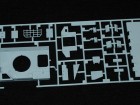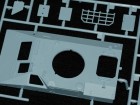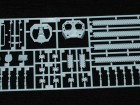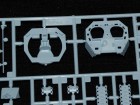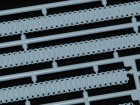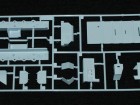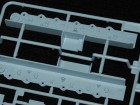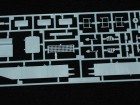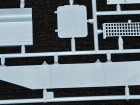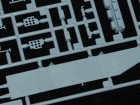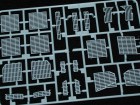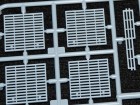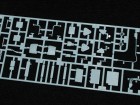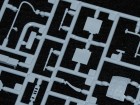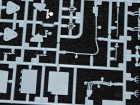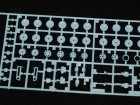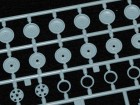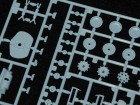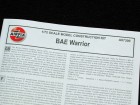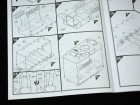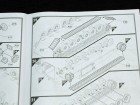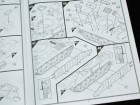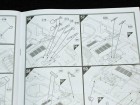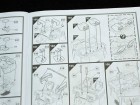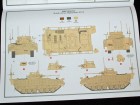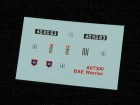The kit moulding
So, the BAe warrior is a valuable addition to the range and a timely addition to the Airfix Lynx AH7 and Merlin HC3 helicopter kits available now. Add to that the vehicles and figures mentioned above like those we’ve already reviewed: British Forces Infantry Patrol, Snatch Land Rovers, Jackal and Coyote vehicles and you’ll have great modelling opportunities as you cross-kit these sets – superb stuff!
So what is it like?
Well, you’ll see from the accompanying photos that you get a lot of plastic for your money. Closely looking at the parts the detail is excellent with the chassis / hull featuring finely engraved and raised detail.
Several hatches on top of the vehicle can be glued open and what is really impressive is that the rear access door can be modelled open and a decent level of interior detail like seats and other instruments/kit is included. I can already see this kit set on a nice base with some of the Airfix British Forces figures!
Tracks are moulded in plastic sections that is perfectly reasonable in this scale and, to be honest, you’ll only see the lower sections as the upper run will be covered by the armour grills. Speaking of the latter these are quite heavy and are likely to be replaced by one of the new Photo Etched (PE) sets becoming available for Airfix’s new armour kits (we’ll bring you a review of that set very soon).
Wheel hub detail is also very clean and crisp – this is looking like a very nice addition to this British Forces Afghanistan range.
Separate tools are a nice touch and definitely needed in this scale.
Instructions and decals
Colour painting guides are provided on the side of the box as well as in detail on all-colour pages in the instruction sheet. Humbrol colour references are given, the colours are named and this will help you to match the colours from your own source to complete your model authentically.
The small decal sheet looks fine and as you can see includes the usual registration plate and insignia – quality looks fine too.
To conclude
I am very impressed with what is a neat addition to the Airfix ‘Operation Herrick Afghanistan’ range. The fact is you are getting a new-tool state-of-the-art moulding in a kit that is well detailed; yes, there is a little excess flash, but so what, this is minimal and doesn’t detract too much from the model.
Co-ordinating the release to compliment multiple types is a new and innovative approach that’s great for modellers. 1:48 scale is extremely popular now, especially amongst armour modellers and deserves to sell well and undoubtedly will, of that, I’m sure. This package offers great value for money in my opinion.
Keep an eye on Finished Now to see some of these models and sets completed.
Recommended
Geoff C.
SMN Quick summary Star rating out of 5
Here’s a bit of background about the type
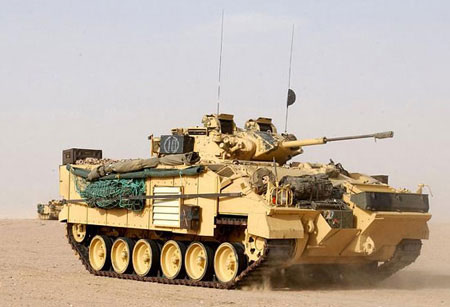
The Warrior tracked vehicle family is a series of British armoured vehicles, originally developed to replace the older FV430 series of armoured vehicles. The Warrior started life as the MCV-80 project that was first broached in the 1970s, GKN Sankey/Defence winning the production contract in 1980. GKN Defence was subsequently purchased by BAE Systems (via Alvis plc). A total of 789 FV510 and variants were manufactured for the British Army, and 254 of a modified version (Desert Warrior) were produced for the Kuwaiti Army.
The Warrior incorporates several design features in keeping with UK battlefield experience. In particular, there are no firing ports in the hull, in line with British thinking that the role of the armoured personnel carrier/infantry fighting vehicle (APC/IFV) is to carry troops under protection to the objective and then give firepower support when they have disembarked. The absence of firing ports also allows additional applique armour to be fitted to the sides of the vehicle, which is invariably applied to Warriors involved in active operations. The cage armour used at one stage was replaced in 2007 by “Wrap Two” applique armour. The basic armour provides all-around protection against 14.5 mm armour-piercing ammunition.
